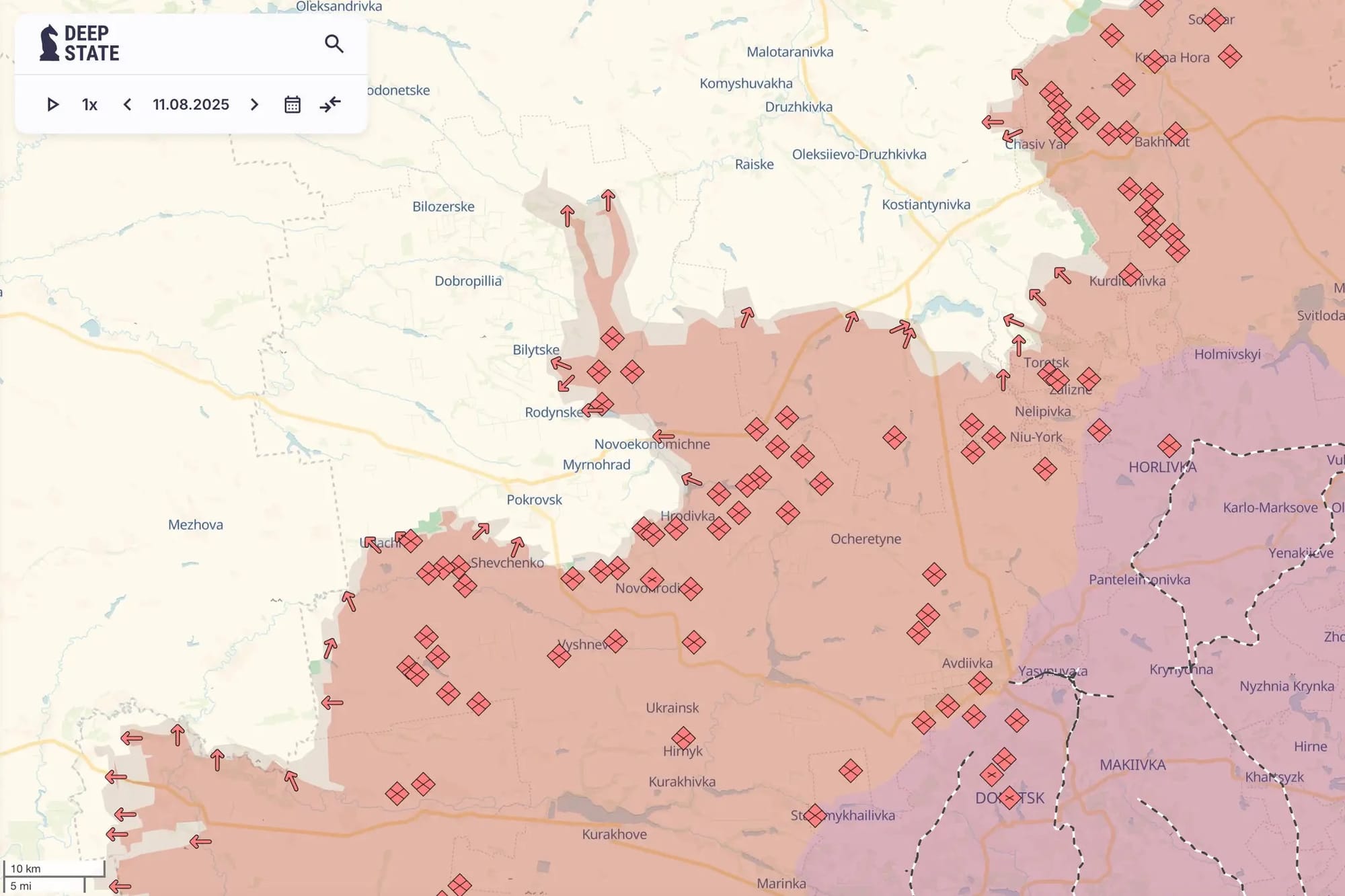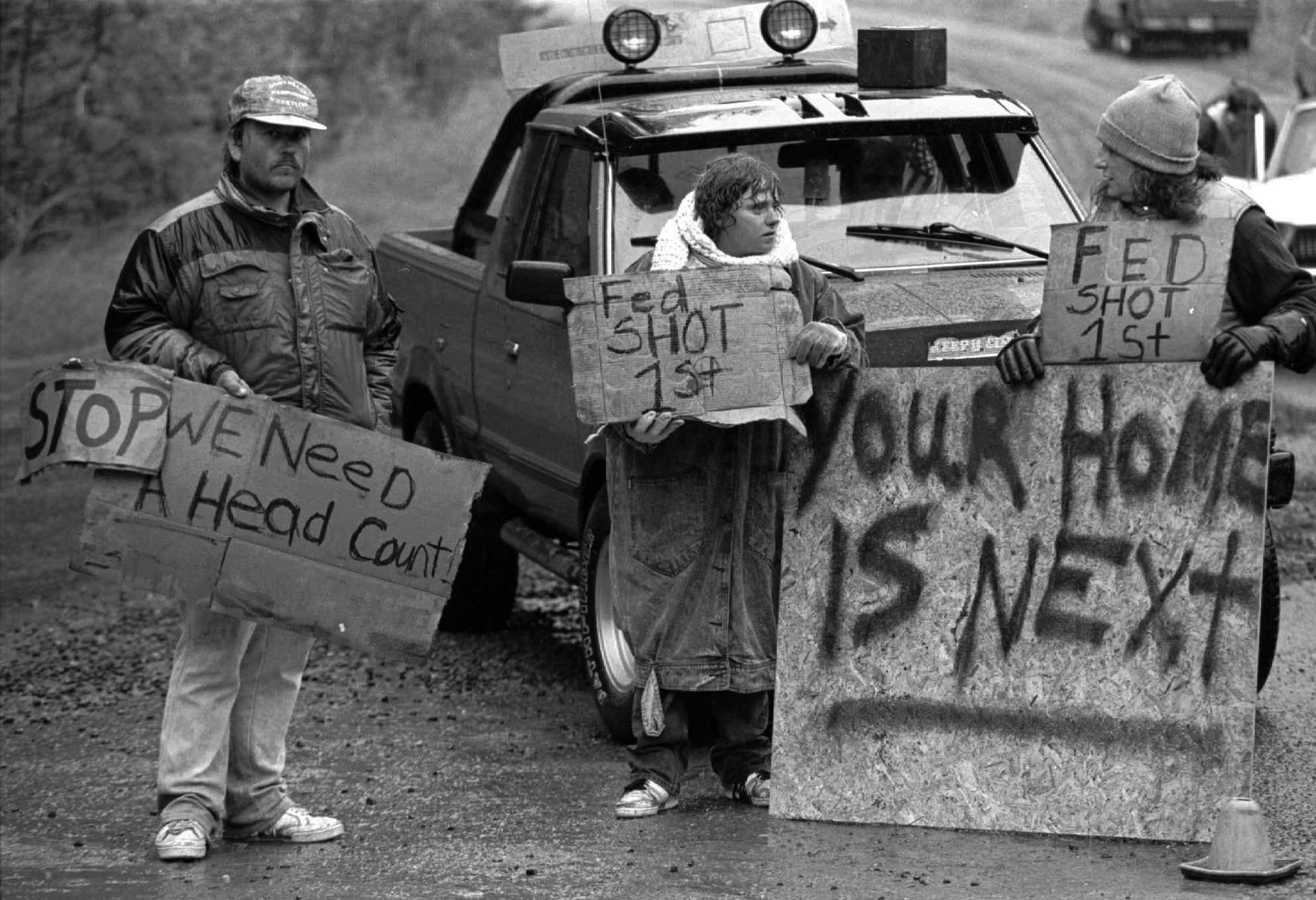Top 5 US news stories
August 22 2025

Amid Tariff Pressures, Top Retailers Gain Market Share With Low-Price Strategies
Federal Judge Orders ‘Alligator Alcatraz’ Detention Center Dismantled Over Environmental Risks
Federal Workforce to Shrink by 300,000 This Year in Largest Cut Since WWII
Israel to Call Up 60,000 Reservists for Gaza City Invasion as Famine Is Declared
How a Crowdsourced Online Map Is Shaping the War in Ukraine
Newsletter sponsor

1. Amid Tariff Pressures, Top Retailers Gain Market Share With Low-Price Strategies
Walmart, Amazon and the owner of T.J. Maxx are scooping up market share from rivals by offering shoppers good deals and convenience. In a bid to ease the burden on stressed-out consumers and undercut competitors, Walmart has kept price increases to a minimum by absorbing much of the tariff cost. “We’re keeping our prices as low as we can for as long as we can,” Walmart Chief Executive Doug McMillon said Thursday. TJX is seizing the moment by snapping up excess inventory that other retailers ordered ahead of tariffs—and now need to unload. Its CEO called the buying opportunities “outstanding.” Amazon made improvements to its delivery network that helped get packages to customers faster and more cheaply. That helped propel a whopping 11% increase in online-store sales in the latest quarter, Amazon executives said. So far, tariffs haven’t made a big impact on its prices, the e-commerce giant said. Walmart is beating out rivals like Target in part because of its low prices and in part because a large share of its sales are groceries—an essential purchase even for cash-strapped shoppers. Tariff-related price increases are prompting more middle- and low-income shoppers to focus on needs over wants, Walmart executives said Thursday. Because of tariffs, Walmart is raising prices on about 10% of the goods it imports to the U.S., absorbing the rest of the elevated cost.
WSJ
2. Federal Judge Orders ‘Alligator Alcatraz’ Detention Center Dismantled Over Environmental Risks
A federal judge on Thursday ordered that no more immigrant detainees be sent to a center in the Florida Everglades, and that much of the facility be dismantled. The ruling rebuked the state and federal governments for failing to consider potential environmental harms before building the facility, known as Alligator Alcatraz. The judge gave both branches of the government 60 days to move out existing detainees and begin to remove fencing, lighting, power generators and other materials. The order also prohibits any new construction at the site. The decision is a major legal setback for the detention center, the nation’s first state-run facility for federal immigration detainees, which has faced several lawsuits and numerous complaints about poor conditions and other problems. The state immediately filed a notice saying that it intended to appeal.

NYT
3. Federal Workforce to Shrink by 300,000 This Year in Largest Cut Since WWII
There will be some 300,000 fewer federal workers on the government payroll by the end of December than there were in January, according to the Trump administration’s top human resources official. That amounts to the loss of about one in eight federal civilian workers, and would be the largest single-year reduction since World War II. But in an interview with The New York Times on Thursday, the director of the Office of Personnel Management, Scott Kupor, painted the coming few months as a period of relative stability after a time of tremendous upheaval. He said the resignation incentives first introduced by the Department of Government Efficiency, or DOGE, accounted for the bulk of the 300,000 departures. He said most would be officially separated by the end of September, and others by the end of the year. Most have already stopped working, even though they remain on the payroll. In addition, though some already announced cuts are still pending, he said he did not expect significant new layoffs — formally called reductions in force — before Sept. 30, the end of the government’s fiscal year. The departures are a combination of employees who voluntarily took an early retirement or resigned and continued to get paid through September, as well as fired probationary employees and others who have been laid off in agency reorganizations, including at the Department of Health and Human Services, U.S. Agency for International Development and the Consumer Financial Protection Bureau.
NYT
4. Israel to Call Up 60,000 Reservists for Gaza City Invasion as Famine Is Declared
A. The Israeli military said on Wednesday that it would begin calling up around 60,000 reservists for duty as it proceeds with plans to take over Gaza City, a Hamas stronghold where hundreds of thousands of Palestinians are believed to be sheltering. The decision comes as an overwhelming majority of Israelis want the government to strike a deal to end the war in exchange for the remaining hostages held by Hamas. Israel’s largely reservist army is exhausted after nearly two years of fighting. Israel also plans to extend active duty for around 20,000 reservists already serving, the military said. Reservists will begin to receive letters in the coming days, a military official said. The military doesn’t reveal the number of troops in its standing army, but the official said most troops serving in Gaza aren’t reservists. Israel’s security cabinet earlier this month approved the invasion and takeover of Gaza City and the evacuation of its population to the south. The military’s plans for the operation are expected to be endorsed by the security cabinet in the coming days, according to Israeli officials.
B. Gaza City and the surrounding territory are officially suffering from famine, a global group of experts announced on Friday, nearly two years into an unrelenting war in which Israel has blocked most food and other aid from entering the Gaza Strip. The group, which the United Nations and aid agencies rely on to monitor and classify global hunger crises, said that at least half a million people in Gaza Governorate were facing the most severe conditions it measures: starvation, acute malnutrition and death. With rare exceptions, the rest of Gaza’s total population of two million people was also struggling with severe hunger, according to the group, the Integrated Food Security Phase Classification,which is made up of food insecurity experts who monitor world hunger. For many of those people, the group said, conditions were likely to get worse by the end of September, sending two additional governorates farther south — Deir al-Balah and Khan Younis — into an official famine.
WSJ, NYT
5. How a Crowdsourced Online Map Is Shaping the War in Ukraine
Earlier this month, rumors spread that Russian troops had pierced Ukrainian defensive lines along a critical section of the eastern front. Soldiers spoke of night infiltrations, gunfire rattling in the distance and skirmishes near villages once considered secure. The rumors quickly reached Ruslan Mykula and Roman Pohorilyi, the Ukrainian co-founders of DeepState, the group behind what has become the definitive online map charting battlefield movements. After a day of digging, the two men confirmed that the breach was real, and worse than initially thought, with Russian troops pushing nearly 10 miles forward. “There was a very big problem,” Mr. Pohorilyi said in an interview, adding that Ukraine’s defenses in the area had been at risk of crumbling. The pair knew that updating the map with the Russian advance would be politically explosive. With peace talks heating up, publicizing the breach risked weakening Ukraine’s hand in the negotiations. At the same time, it could force Kyiv’s top military command, which had so far been muted about the advance and seemingly slow to grasp its severity, to respond decisively. On the evening of Aug. 11, they updated the map and posted a long message on social media explaining the “quite chaotic” situation. Screenshots of the map showing two long Russian incursions that looked like rabbit ears spread like wildfire in Ukraine, and the military, after initially downplaying DeepState’s assessment, quickly deployed elite troops to contain the breach. DeepState’s revelations about the Russian advance illustrate just how central its map has become to Ukraine over three and a half years of war. The map receives some 900,000 views daily on average. Among its viewers are civilians living near the front, trying to gauge if Russian troops are closing in; military experts and reporters tracking the shifting battle lines; humanitarian volunteers organizing evacuation plans; and even soldiers trying to cut through the fog of war. “It’s kind of the go-to map in Ukraine,” said Rob Lee, a military expert at the Foreign Policy Research Institute. An avid user of the map himself, he posts its updates every week on X. The popularity of DeepState shows how technology is reshaping the way war is chronicled. Geolocated combat footage streamed by soldiers on social media has become a key resource for mappers, while satellite internet available even in frontline hot spots lets troops send tips about breakthroughs almost instantly. Where a few decades ago it would take days for army reports or journalists’ dispatches to reach the public, Ukrainians now check DeepState when they wake up.

NYT
August 22 1992: During 11-day siege at at Ruby Ridge, Id., FBI HRT sniper Lon Horiuchi kills Vicki Weaver while shooting at another target
The Ruby Ridge incident in August 1992, where FBI sniper Lon Horiuchi killed Vicki Weaver (an unarmed woman holding her baby) while attempting to shoot someone else, became a pivotal catalyst in the escalation of 1990s anti-government extremism and domestic terrorism. Along with the subsequent 1993 Branch Davidian siege at Waco, Texas, Ruby Ridge served as a powerful symbol of federal government overreach that galvanized militia movements, white supremacist groups, and anti-government extremists across the country. These incidents created a narrative of government tyranny that directly influenced domestic terrorists like Timothy McVeigh, who cited both Ruby Ridge and Waco as motivations for the 1995 Oklahoma City bombing that killed 168 people. The controversial rules of engagement, the death of civilians including children, and what many perceived as excessive federal force created martyrs for the extremist cause and helped transform isolated anti-government sentiment into a broader, more organized domestic terrorism threat that defined much of the decade's internal security challenges.

Found a mistake? Have a news tip or feedback to share? Contact our newsroom using the button below:
citizen journal offers three flagship products: a daily national news summary, a daily Kansas news summary, and local news and school board summaries from 12 cities across Kansas. Each issue contains 5 paragraph-length stories that are made to be read in 5 minutes. Use the links in the header to navigate to national, kansas, and local coverage. Subscribe to each, some, or all to get an email when new issues are published for FREE!
Sponsors (click me!)





Sources
- https://www.wsj.com/business/retail/trump-tariff-retailers-walmart-amazon-tjx-d4933283?mod=hp_lead_pos1
- https://www.nytimes.com/2025/08/21/us/alligator-alcatraz-florida-ruling.html
- https://www.nytimes.com/2025/08/22/us/politics/trump-federal-workers.html
- https://www.wsj.com/world/middle-east/israel-to-call-up-60-000-reservists-for-gaza-city-invasion-f172e843?mod=hp_lead_pos4
- https://www.nytimes.com/2025/08/22/world/middleeast/famine-gaza-city-israel.html
- https://www.nytimes.com/2025/08/22/world/europe/ukraine-russia-deepstate-war-map.html?unlocked_article_code=1.gE8.U50s.ezbOrXxFNagT&smid=url-share
See the citizen journal Podcast! Released on Apple, Spotify and YouTube around 10a CST.

